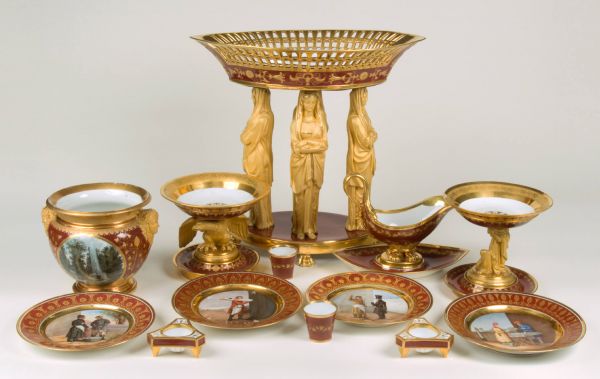|
|
Objects from the Guriev Service. 1809–1816

Vestals. Vase. 1809
St Petersburg Yard-Keeper. Plate. 1895
Vase on the figured foot with a tray. 1810–1811
Vase on the figured foot with a tray. 1809–1811





Imperial Porcelain Factory
Overglaze paintwork, gilding, modelling and zieren on porcelain
State Russian Museum
Пост.: 1927 из разных источников – ГМФ, Петергофских дворцов-музеев, ГЭ
Annotation
The first official state service created during the reign of Alexander I, the Guriev Service was produced at the Imperial Porcelain Factory in St Petersburg (1809–1816) and it is an excellent example of Empire style in Russian decorative art. The project was headed by the famous local sculptor Stepan Pimenov. Originally called the Service with Images of Russian Costumes or the Russian Service, the objects were decorated with miniature paintings depicting tradesmen in traditional Russian attire. For the first time in the history of Russian applied art, famous landmarks in St Petersburg and genre scenes of life on the city streets were painted on all the pieces of an official palace service – plates, receptacles and the wine and ice-cream coolers. The miniature paintings of local traders and craftsmen were based on drawings and engravings by leading Russian and foreign artists. In 1824, the service was renamed the Guriev Service after Count Dmitry Guriev, who was responsible for the Imperial Porcelain Factory at that time. The service was intended for official state receptions at the Winter Palace and in Peterhof (after 1848). Between the mid-19th century and 1917, the Guriev Service was constantly supplemented by new objects, replacing those which had been lost during use.

